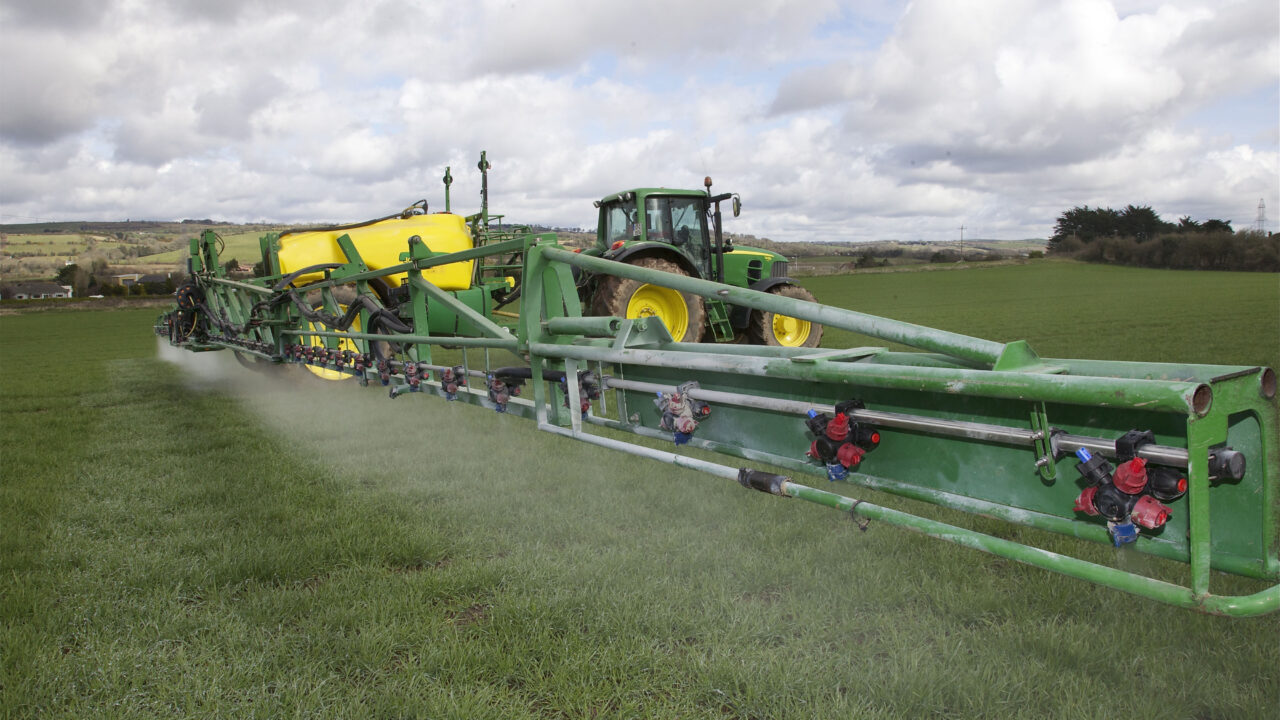According to Teagasc machinery specialist, Dermot Forristal, a standard ethylene glycol-based coolant is the best anti-freeze to use in a sprayer, to provide the required frost protection over the coming winter months.
Speaking on the most recent edition of the Tillage Edge podcast, he said that there are different types of anti-freeze.
“In some markets they actually sell a bespoke sprayer anti-freeze. But, really, any car anti-freeze will do the job, where sprayers are concerned,” he explained.
“Products sold in other markets have claims made for them to the effect that they will do less damage to seals.
“But the reality is that a standard car anti-freeze is working in an environment where it is coming into close contact with hoses,” he added.
“There are also seals and water pumps in all cars. So a normal, commercial anti-freeze would do when it comes to protecting the sprayer over the winter months.”
Pre-mixed coolant
Forristal said that he would not recommend spending extra to buy it as pre-mixed coolant, instead advising that diluting the concentrate down to 50% with water will suffice.
“Purchasing a bespoke anti-freeze might be considered for tractors, where there are other corrosion risks that a pre-mixed coolant might deliver protection from,” he said.
Forristal went on to point out that, where sprayers are concerned, there is no need to buy organic acid type (OAT) coolants.
“A good, basic ethylene glycol-based anti-freeze will suffice,” he continued.
Volume of anti-freeze
When it comes to determining the volume required for a sprayer, it is important to have sufficient liquid in the system to allow the machine build up pressure.
“Obviously, it’s important to actually see the anti-freeze in the system,” Forristal added.
“And, above all else, it is important to have the pump fully protected. If anti-freeze is sprayed out through the nozzles, it is important to check that it is coming out though the entire system.”
Application
Forristal advised that the sprayer should be thoroughly washed out before anti-freeze is added. This includes the cleaning of all filters.
“All valves should then be opened to get as much of the residual water out of the system as possible. It is not possible to empty out a sprayer completely,” he continued.
The Teagasc machinery specialist advises that a 30% concentration of anti-freeze will suffice.
In practical terms this means, adding a 50% diluted product to the sprayer; the residual water in the machine should, subsequently, bring the concentration down to 30%. This should give frost cover down to -12 °C.
In terms of volumes to be added, the following rule of thumb is relevant – a trailed sprayer will require around 40L of the mixed solution, whereas a mounted sprayer will require up to 20L of solution.
“Some of the big trailed sprayers may require up to 50L of solution in order to get the anti-freeze to all of the parts of the machine, where it is needed to be,” Forristal added.
“But in the case of smaller mounted sprayers, as little as 5L of anti-freeze concentrate may be required. But sprayers with bigger booms will require 10L of concentrate.”
